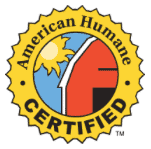
The American Humane Certified label is somewhat meaningful and verified. While the American Humane Association says its standards aim to ensure the humane treatment and improve the welfare of farm animals, the requirements fall short in meeting consumer expectations for a “humane” label in many ways. Most Americans think that a “humane” label should mean that the animals had adequate living space (86%), went outdoors (78%) and were raised without cages (66%). The American Humane Certified standards do not always assure consumers that these basic requirements were met. For example, minimum space requirements are sometimes greater than the industry norm, but do not always allow for freedom of movement. Animals such as chickens, pigs and turkeys can be continually confined indoors; female pigs with their newborn piglets can even be confined in barren crates that do not allow the mother pig to turn around, much less engage in natural and instinctive nesting behaviors. For beef cattle and dairy cows, grazing on pasture is not required and feedlots are allowed.
Is the label verified?
Yes
Is the meaning of the label consistent?
Yes
Are the label standards publicly available?
Yes
Is information about the organization publicly available?
Yes
Is the organization free from conflict of interest?
Yes
Was the label developed with broad public and industry input?
Partially
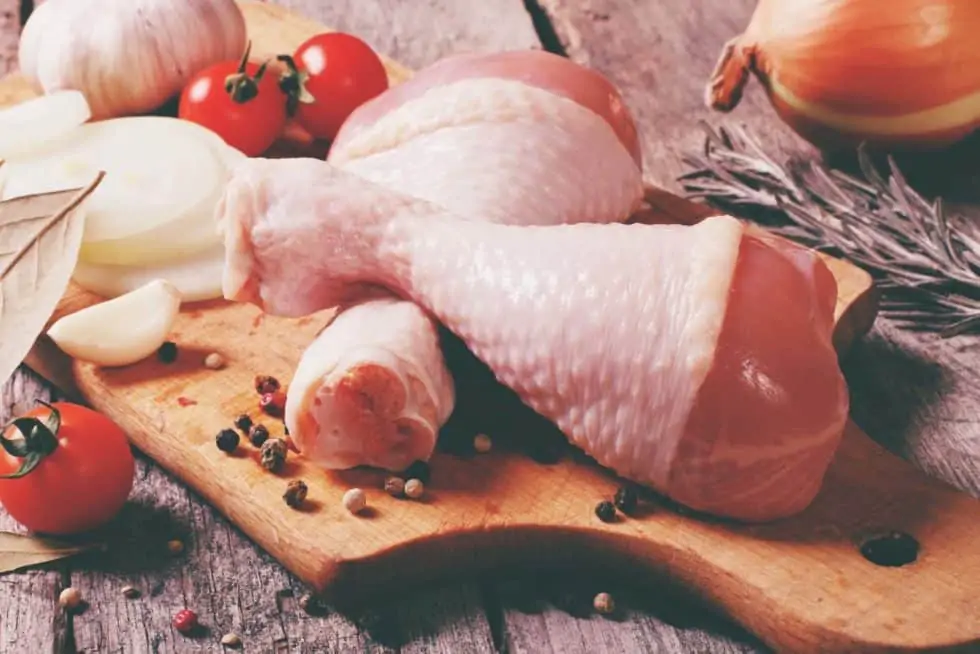
This label can be found on: Beef, Chicken, Pork, Turkey, Dairy, Eggs
ORGANIZATION: American Humane Association
url: http://www.humaneheartland.org
LABEL STANDARDS: http://www.humaneheartland.org/our-standards
What this label means
This label means that the animals were raised on farms that met the farm animal welfare standards of the American Humane Association. The American Humane Association told us that its farm animal welfare standards are “based on science, founded in the internationally accepted values of the Five Freedoms, and attainable in modern agricultural systems. Animals raised under American Humane Certified standards can sit, stand, turn around and extend their limbs. They are well cared for, with their own kind.”
The American Humane Association standards are based partially on the “Five Freedoms of Animal Welfare,” which include freedom from hunger and thirst, freedom from discomfort, freedom from pain, injury and disease, freedom to express normal and natural behavior (e.g., accommodating for a chicken’s instinct to roost), and freedom from fear and distress.
However, in our analysis of the standards, we found many instances where standards do not require that living conditions and management practices ensure that even these basic “freedoms” are accommodated (in some cases, materials and conditions that allow animals to engage in natural behaviors are “strongly encouraged,” but not required). While the organization states that the standards require accommodating a chicken’s instinct to roost, for example, providing roosts is not required in the standards for chickens raised for slaughter. Other basic natural behaviors such as foraging for chickens, rooting and foraging for pigs, nest building for pregnant pigs, and grazing on pasture for beef cattle and dairy cows are not required to be accommodated.
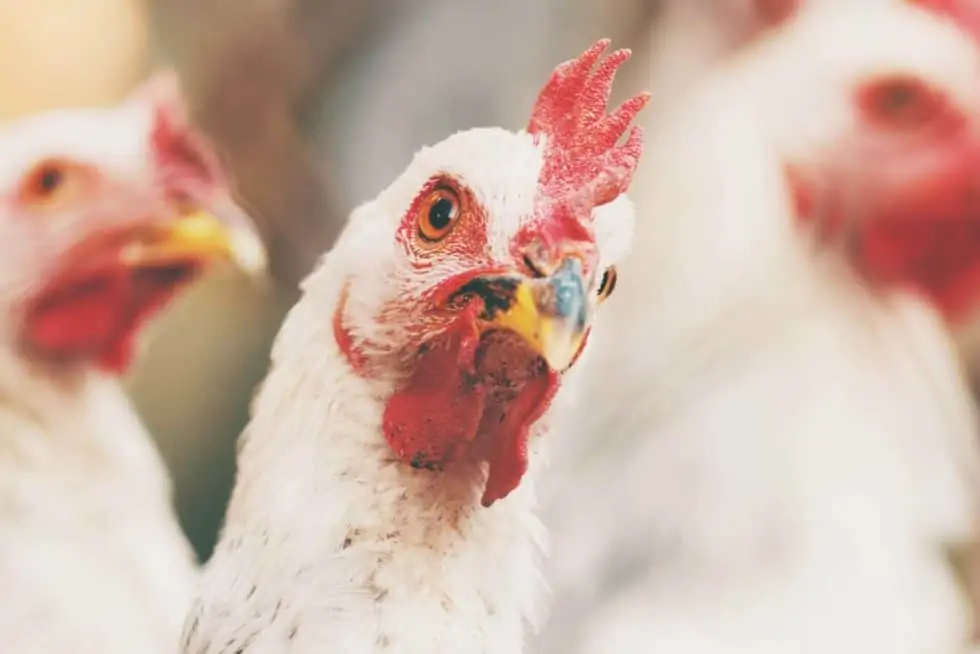
A closer look at the standards for broilers (chicken)
Indoor space per bird
The indoor space requirement for a chicken is 7.0 pounds per sq. ft. which is slightly more than the chicken industry standard of 7.5 pounds per sq. ft. This means that a 5-pound chicken can be given as little as 10 inches by 10.3 inches of total space per bird.
Clean litter
The litter must be clean and of good quality. Litter must be maintained in a dry and friable condition and must not be allowed to get wet. This exceeds the industry norm.
Indoor air / Ammonia levels
The limit for ammonia is 25 ppm, which is in line with the industry norm. The standards state that ammonia levels are ideally less than 10 ppm but must not exceed 25 ppm.
Lighting
The standards require a minimum of 4 hours of darkness per 24-hour cycle, which does not exceed the industry norm. The requirement in an earlier version of the standards was 6 hours of darkness per 24-hour cycle. The standards do not require that houses have natural light.
Indoor environmental enrichment
The standards strongly encourage, but do not require, indoor environmental enrichment such as straw bales, ramps and short perches. Indoor environmental enrichment can benefit welfare by giving chickens the opportunity to engage in natural behaviors. A producer passes the inspection if environmental enrichment is not provided.
Outdoor access
Outdoor access is not required and the birds can be continually confined indoors.
Genetics and better breeds / limit on fast growth
Breeds are not addressed in the standards and there is no limit on rate of growth. The industry standard is to use chickens that have been bred for rapid growth at the expense of the bird’s health and welfare.
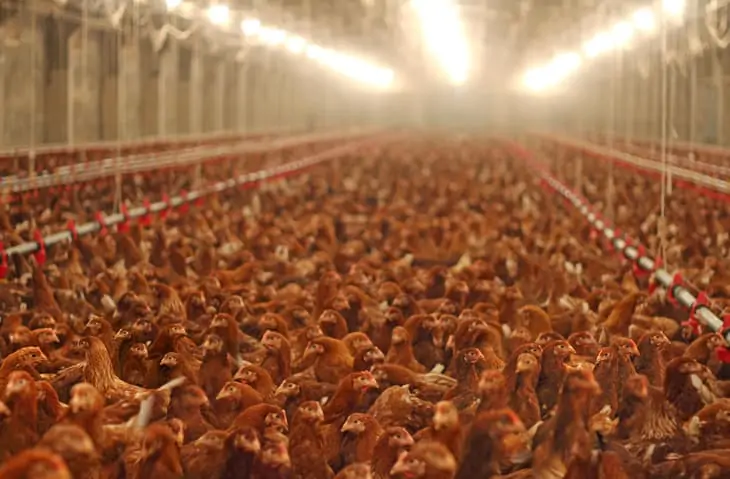
A closer look at the standards for laying hens (eggs)
Cages
The standards prohibit raising hens in crowded cages without enrichment (e.g., nest boxes, roosts). This requirement exceeds the industry norm, which is to raise laying hens in crowded, barren cages. The standards allow enriched colony houses, which house the laying hens in cages that can be opened during the day and provide perches, nest boxes and scratching pads.
Indoor space per bird
The indoor space requirements for laying hens vary depending on the type of housing that is used, and the American Humane Certified standards require slightly more space than the industry norm (which is roughly 9 inches by 7.5 inches in a cage). The minimum space requirement for a hen in an enriched colony house is at least 10 inches by 11.6 inches. A lightweight laying hen (e.g., White Leghorn) in a house with a perching/roosting area over a droppings pit/belt, and in a multi-tier system is given a minimum of 12 inches by 12 inches of space per bird. In a single level, all-floor henhouse, a laying hen has a minimum of 1.5 sq. ft., which is roughly 14.5 inches by 15 inches, and is more than the industry standard for this type of housing, which is 1 sq. ft. for a White Leghorn laying hen and 1.2 sq. ft. for a brown laying hen.
Clean litter
Litter that is wet, infested with parasites or otherwise harmfully contaminated must be immediately removed and replaced. Like the standards for chickens raised for slaughter, the litter must be maintained in a dry and friable condition, but the laying hens are not required to have litter that is clean. A minimum of 15% of the house must be devoted to a litter area.
Indoor air / Ammonia levels
The limit for ammonia is 25 ppm, which is in line with the industry norm. The standards state that ammonia levels are ideally less than 10 ppm but must not exceed 25 ppm.
Indoor environmental enrichment
The standards do not require the provision of environmental enrichment in cage-free houses. The standards only recommend providing environmental enrichment when outbreaks of injurious feather-pecking and cannibalism occur.
Outdoor access
Outdoor access is not required and the birds can be continually confined indoors. However, the standards require outdoor access if the egg carton also has the words “free range” or “pasture-raised.”
When a carton of eggs has a “free range” claim on the label in addition to the American Humane Certified seal, it means that the hens were provided a minimum of 1 acre of range for every 2,000 hens (4 feet by 5.45 feet or 21.8 sq. ft. per hen), of which at least one quarter (roughly 2.3 feet by 2.3 feet or 5.45 sq. ft. per hen) must be available at any one time whenever birds have access to the exterior.
When a carton of eggs has a “pasture-raised” or similar claim on the label in addition to the American Humane Certified seal, it means that the hens were provided a total of 2.5 acres of pasture per 1,000 hens (roughly 10.4 feet by 10.4 feet or 108.9 sq. ft. per hen), of which at least one quarter (roughly 5.2 feet by 5.2 feet or 27.2 sq. ft. per hen) must be available at any one time whenever birds have access to the exterior.
Beak trimming
The standards allow beak trimming, which is in line with the industry norm. The standards state that beak trimming may only be performed where there is a concern about cannibalism. It is permitted as a preemptive measure to mitigate the risks of injurious feather-pecking.
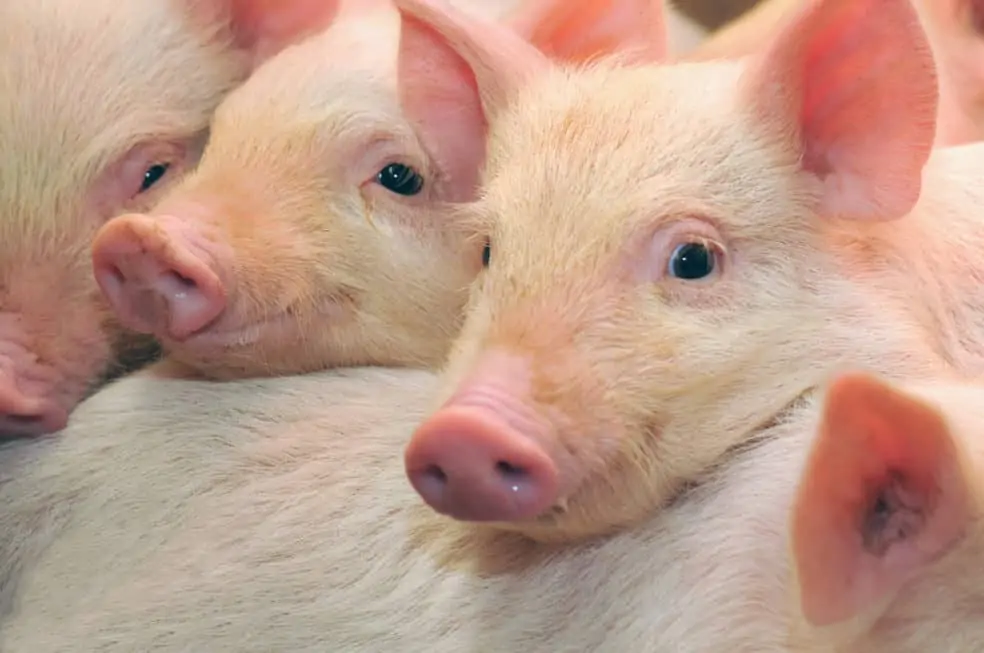
A closer look at the standards for pigs (pork)
Indoor space per growing pig
The standards for pigs have minimum indoor space requirements, which vary depending on the weight of the pigs and do not exceed the industry norm. A 66-pound pig has a minimum total area of 1.8 ft by 1.8 ft (or 3.2 sq. ft.), a 132-pound pig has a minimum total area of roughly 2.4 ft by 2.4 ft (or 5.9 sq. ft.), a 176-pound pig has a minimum total area of 3 ft by 2.4 ft (or 7.2 sq. ft.), and a 287-pound pig has a minimum total area of 3.1 ft by 3 ft (or 9.3 sq. ft.).
These space requirements grant very little space to each animal; it allows the pigs to turn around and lie down, but not to move around freely. The lying area has to be big enough only to accommodate all pigs together lying on their sides.
Crates for gestating and farrowing sows
The standards allow the use of narrow confinement crates (“farrowing crates”) for a sow (female pig) and her piglets. Farrowing refers to giving birth to a litter of pigs and is the period when a pig is due to give birth until her piglets are weaned. The standards require that the crates are wide enough for the sow to lie down without her udder extending into the adjacent stall and without having to rest her head in the feeders. This means the crates have to be big enough to contain the sow’s body, but do not have to provide her with room to move or turn around. No bedding is required for sows that are about to give birth. The standards require that piglets be at least 21 days old before they are weaned, so a sow would be confined in a farrowing crate, unable to turn around, for at least 21 days at a time.
Pregnant pigs can be confined in individual stalls for the first 7 to 10 days after breeding. Stalls for gestating sows have to be big enough to allow the sow to turn around.
Clean bedding
The standards do not specify that clean bedding materials have to be provided, except in service pens (for mating) and for pigs kept outdoors during the winter (outdoor access is not a requirement in the standards). The lying area for growing pigs can be either slatted or solid flooring, and growing pigs must have access to a dry, clean lying area at all times, but it does not have to be bedded. This does not exceed the industry norm.
Indoor air / ammonia levels
The limit in the standards for ammonia is 25 ppm, which is in line with the industry norm. The standards state that ammonia levels are ideally less than 10 ppm but must not exceed 25 ppm.
Indoor environmental enrichment
Indoor environmental enrichment such as straw or other suitable media for the expression of natural behaviors is encouraged but not required.
Outdoor access
Outdoor access is not required and the pigs can be continually confined indoors.
Physical alterations
Tail docking is permitted to avoid the pain and suffering caused by tail biting. When tail biting occurs on pig farms, the producer has to take action, including making changes to the environment and management, to prevent further injury.
The standards allow teeth filing of newborn piglets within the first 24 hours of life (or in the case of weak or sick piglets, within 3 days of birth), only when necessary to prevent injury to the sow during milking or to other piglets.
Castration without pain relief is permitted for piglets younger than 7 days of age; castration of older animals must be performed with local or general anesthesia.
The standards prohibit nose ringing and ear notching in pigs.

A closer look at the standards for cattle (beef)
Pasture
For beef cattle, the standards do not require that the animals have access to pasture and are allowed to graze. Grazing is a basic natural behavior of cattle, whose natural diet consists of grass and grass-based forage. Instead, the standards allow feedlots and grain feeding.
Pain relief during castration
Pain relief is required if castration is performed after 4 days of age, which exceeds the industry norm of allowing castration (including with a scalpel or clamps) without providing pain relief.
Hot iron branding
The standards prohibit branding. While the practice of branding for identification is becoming less common, the most recent survey data from 2008 show that nearly 40% of cattle are still marked by branding. The standards also prohibit ear notching or any surgical alteration for identification purposes.
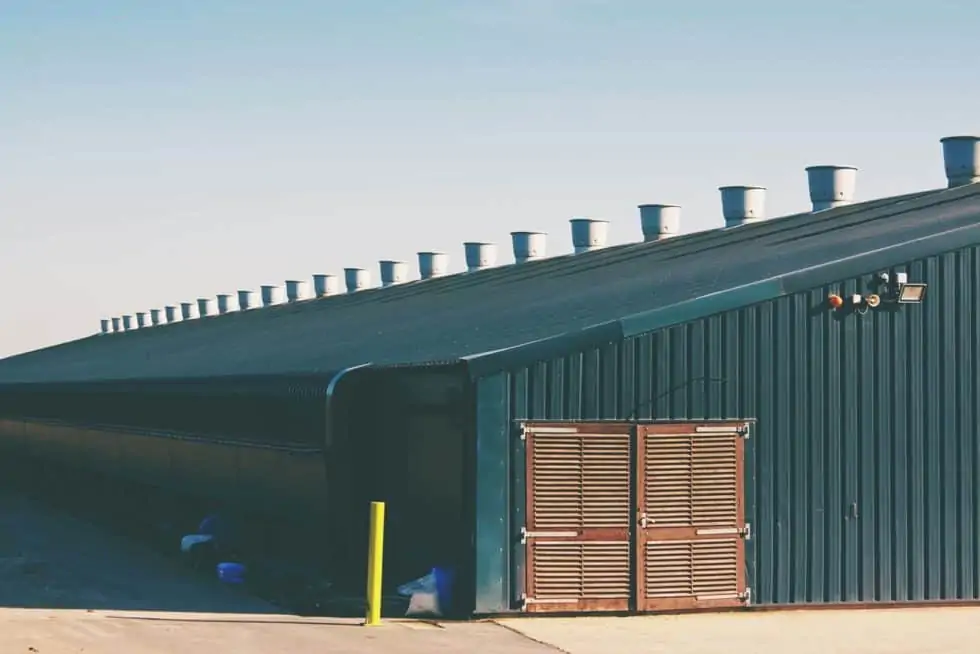
A closer look at the standards for:
Humane slaughter requirements
For chickens, the standards require that managers of slaughter plants appoint at least one trained Animal Welfare Officer, who is responsible for the implementation of the animal welfare policy. Managers, in conjunction with the Animal Welfare Officer, must develop and implement a training program for all staff handling and slaughtering birds. They must ensure that staff members are properly trained to carry out their duties and are competent to perform them. The Animal Welfare Officer must make frequent checks throughout the day to ensure that chickens are being effectively stunned and are insensible throughout the slaughter operations. Procedures have to be in place to ensure that birds are treated humanely during transport and in the slaughterhouse, including proper shackling and stunning of birds prior to slaughter.
For beef and pigs, the American Humane Certified program adheres to the Recommended Animal Handling Guidelines and Audit Guide published by the American Meat Institute Foundation, which are the industry norm for slaughtering and processing practices.
Antibiotic use
To protect public health and combat the global threat of antibiotic resistance, antibiotics should only be used in animal agriculture to treat diagnosed disease. The American Humane Certified standards do not exceed the industry norm, and allow for antibiotics to be used for disease prevention. This could mean treating an entire flock or herd when a veterinarian determines that the animals are at risk of illness. Ionophores, which are considered to be antibiotics by the USDA (though not “medically important” antibiotics), are allowed on a routine basis for beef cattle, dairy cows, laying hens, turkeys and chickens.
Drugs for growth promotion
The standards prohibit the use of growth hormones and beta-agonists for the purpose of boosting growth or feed efficiency.
Animal by-products in feed
Standards for dairy cows and beef cattle prohibit ruminant-derived protein sources (such as slaughterhouse waste) with the exception of milk and milk product in feed. However, pig and poultry slaughter waste products, poultry litter and feces, are allowed in cattle feed. Standards for pork prohibit mammalian-derived protein sources, with the exception of milk and milk products. This means avian-derived protein sources, including poultry slaughter waste products, poultry litter and feces are allowed in pig feed. For chickens, turkeys and laying hens, standards allow feeding animal by-products, including slaughter waste products.
GMOs in feed
The standards do not prohibit GMOs in feed.
CONSUMER REPORTS EVALUATION

How meaningful is this label?
The American Humane Certified label is somewhat meaningful. The standards require that animals are cared for, given food and water, and are not subject to willful acts of abuse. Standards require humane treatment during transport and slaughter, including the provision for an Animal Welfare Officer in poultry slaughterhouses.
However, American Humane Certified (AHC) is not a meaningful label for ensuring that farm animals are raised in an environment that allows them to engage in their instinctive and natural behaviors, with freedom of movement, access to well-managed outdoor areas and fresh air, and comfortable indoor space, all of which consumers believe should be part of humane treatment.
Our 2016 consumer survey shows the percentage of consumers who believe a “humanely raised” labeling claim should mean that:
- The farm was inspected to verify this claim (88%)
- The animals had adequate living space (86%)
- The animals were slaughtered humanely (80%)
- The animals were raised in houses with clean air (78%)
- The animals went outdoors (78%)
- The animals were raised without cages (66%)
The standards require that only some, but not all, of these attributes be met. Outdoor access is not required for poultry and pigs. While the American Humane Association, the organization behind the label, states that it intends for the label to ensure that animals are able to “sit, stand, turn around and extend their limbs,” even these basic requirements do not apply to all animals covered under the program. The standards allow for confinement of farrowing sows (pigs that have recently given birth) in crates (“farrowing crates”) that are not big enough to allow the mother pig to turn around. Even bedding, such as straw, is not required for pigs confined in farrowing crates. For other animals, such as chickens, turkeys, growing pigs and laying hens, minimum space requirements indoors ensure that animals are able to sit, stand, turn around and extend their limbs, but space requirements allow for very little freedom of movement and do not ensure that the animals can walk or move around freely and engage in natural behaviors.
Other examples of natural behaviors that the standards do not require to be accommodated include:
- Standards for chickens raised for slaughter do not include the requirement for roosts (standards for egg-laying hens do include a requirement for roosts).
- Standards for laying hens do not require that birds be given the opportunity to engage in their natural foraging behaviors, as birds can be confined continually indoors, and even indoors only a minimum of 15% of the floor area has to be covered with litter.
- For pigs, environmental enrichments that relieve boredom in a barren environment are only encouraged, but not required.
- Dairy cows, whose normal and natural behavior includes grazing on pasture, are not required to be raised on or given access to pasture.
Many of the requirements in the standards reflect the industry norm. For example, the standards for ammonia levels indoors do not exceed the industry’s guidelines for chickens and pigs, which is 25 ppm. Ammonia in the air is caused by the buildup of feces and urine. Ammonia is a colorless gas with a penetrating and pungent odor, and humans can smell ammonia when levels are above 5 ppm. While an ammonia level of 25 ppm is the recommended exposure limit set by the Centers for Disease Control and Prevention (CDC) for workers for up to a 10-hour workday during a 40-hour workweek (based on the risk of eye irritation and respiratory effects associated with exposure to ammonia), 25 ppm would be considered unpleasant to humans and animals. Some studies suggest it could have detrimental health effects to the animals as well, including irritating the membranes of the lungs and eyes.
When chickens are closely confined in crowded spaces and are not given the opportunity to engage in their natural “scratching-and-pecking” behaviors, feather pecking — chickens pecking at each other — is often a problem and can become a serious welfare concern. The standards allow producers to trim the beaks of laying hens as a preemptive measure to mitigate the risks of injurious feather-pecking and cannibalism. Beak trimming should not be needed in a system that allows more space, freedom of movement, and the ability to engage in natural foraging behaviors.
The standards also allow tail docking for pigs. Like beak trimming for laying hens, tail docking for pigs is a remedial solution to a problem that arises from the animals’ close confinement, stress and boredom. The standards do require an Animal Health Plan that includes changes in the system of management to address events of dangerous or undesirable behaviors, such as tail biting.

Is the label verified?
Yes. Each farm is audited annually by an independent inspector with on-farm experience to ensure compliance and implement a corrective action plan. Each site is audited annually.
Is the meaning of the label consistent?
Yes. Producers do not have to meet 100% of the standards to be certified (producers need a score of 85%); however, producers are required to take corrective action for all issues identified with a loss of points during the audit.
Are the label standards publicly available?
Yes.
http://www.humaneheartland.org/our-standards
Is information about the organization publicly available?
Yes.
Board of Directors: Yes. The members of the Board of Directors of the American Humane Association, and their affiliations, are listed on the website.
Financial information: Yes. Financial information for the American Humane Association, a 501(c)(3) not-for-profit organization, is publicly available.
Is the organization free from conflict of interest?
Yes.
Standards development: Yes. American Humane veterinarians and senior management set the standards based upon the findings of the Scientific Advisory Committee. All individuals are required to be free from conflict of interest.
Verification: Yes. Annual audits are conducted by independent, third-party auditors who work for professional audit firms.
Was the label developed with broad public and industry input?
Partially.
Standards development: Yes. The standards were developed initially in 2000 by a committee of farmers, veterinarians, scientists, and academics.
Standards updates: No. The standards are reviewed annually by a Scientific Advisory Committee, which comprises scientists, veterinarians and an ethicist. Stakeholders may be asked for input during the process. Drafts are not made available for public comment.
